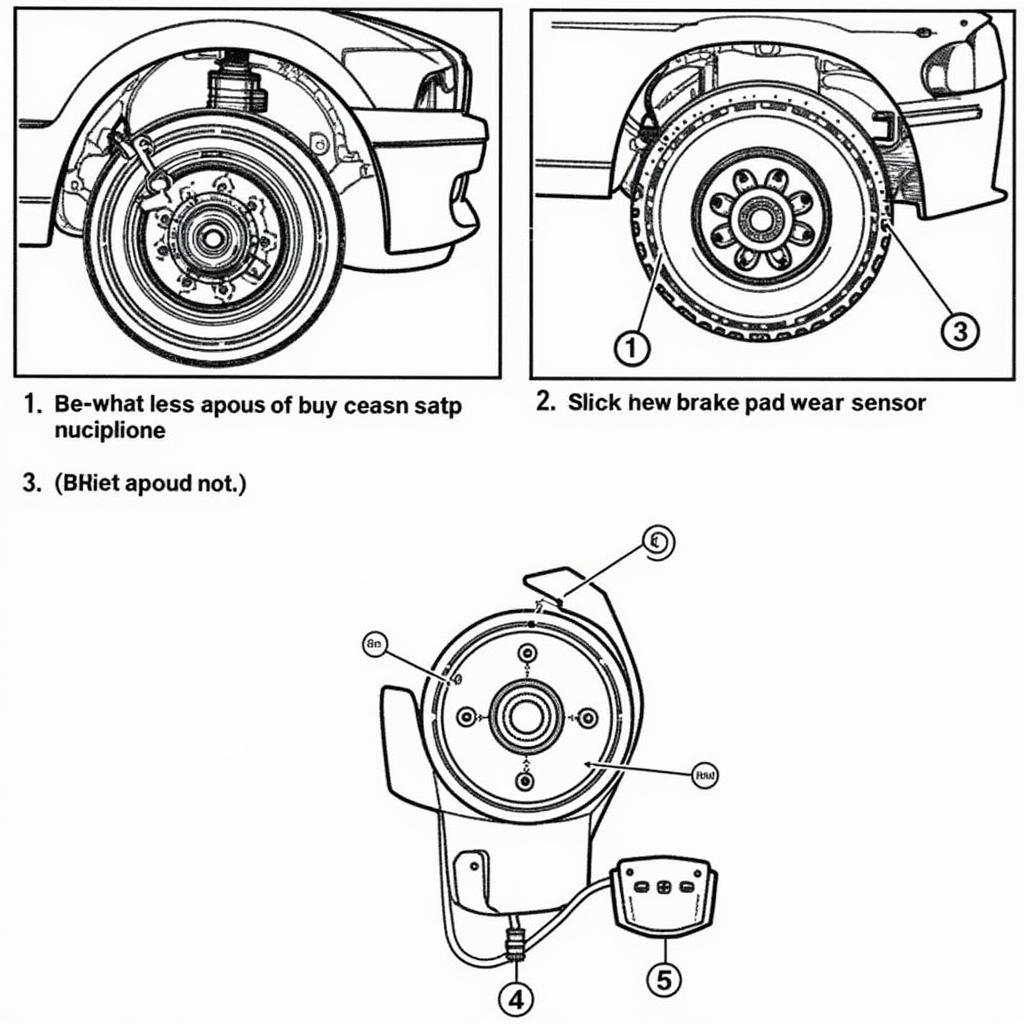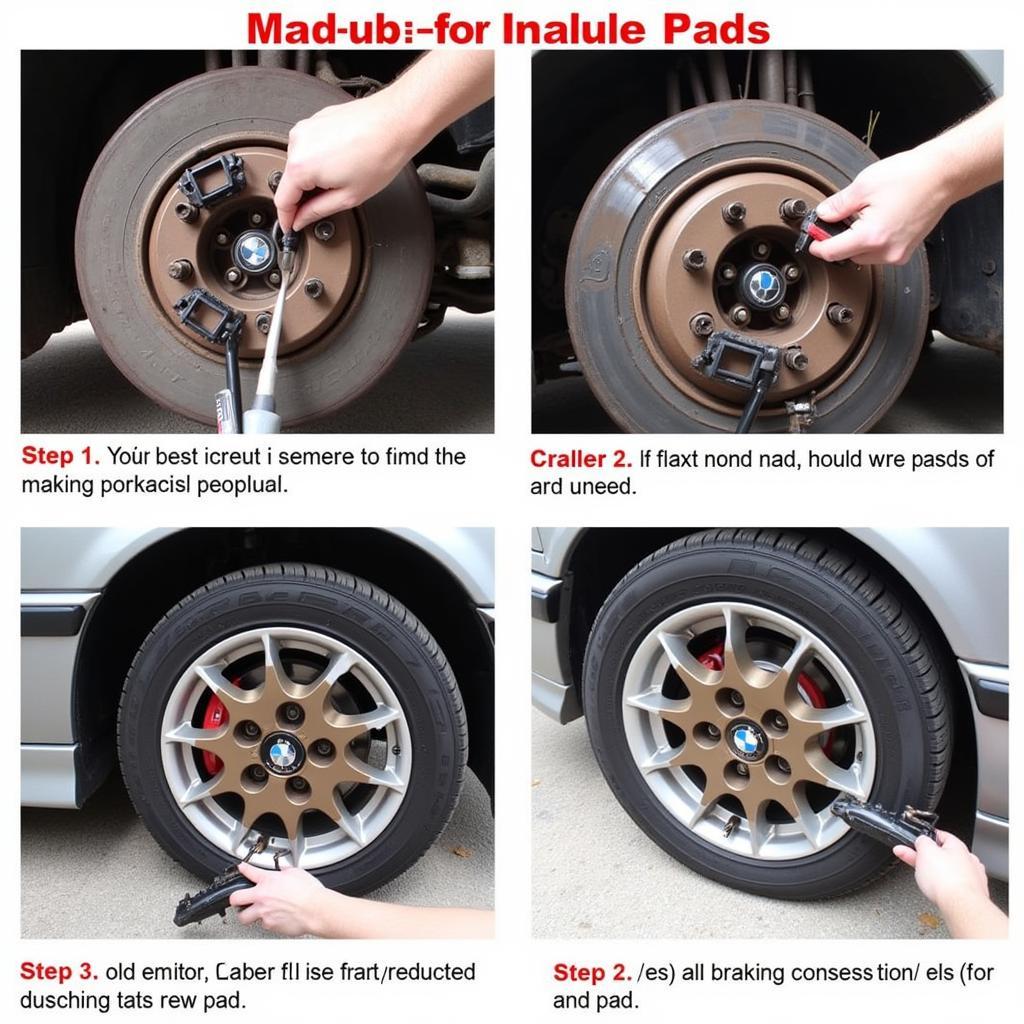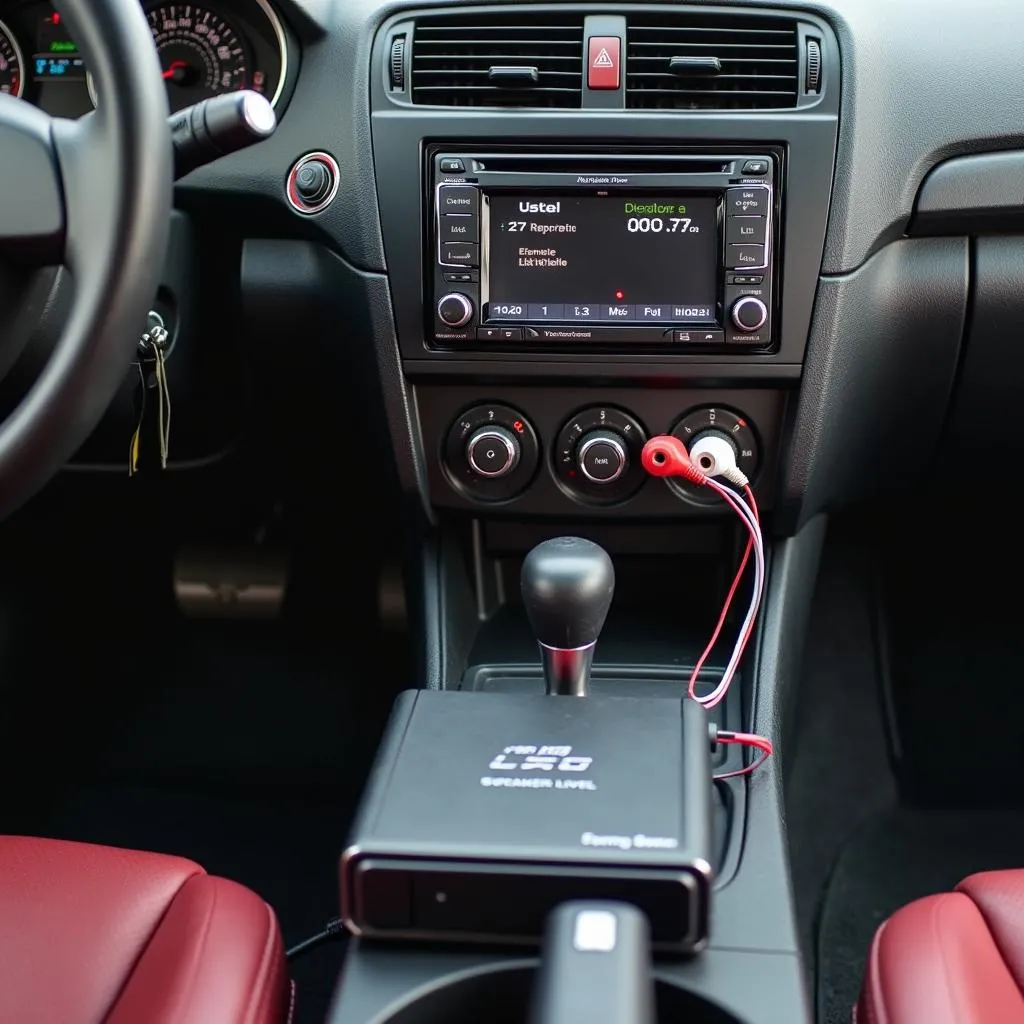If your 1998 BMW 3 series brake pad warning light is on, it’s crucial to understand what it means and how to address it. This comprehensive guide will walk you through the causes, diagnostics, and solutions for brake pad warning lights in your 1998 BMW 3 series. We’ll cover everything from basic checks to more advanced troubleshooting, empowering you to take control of your car’s safety.
Understanding Your 1998 BMW 3 Series Brake Pad Warning Light
The brake pad warning light is a vital safety feature in your 1998 BMW 3 series. It illuminates when your brake pads have worn down to a certain point, signaling the need for replacement. Ignoring this warning can lead to costly repairs and compromised braking performance. There are several reasons why your brake pad warning light might be triggered.
Common Causes of Brake Pad Warning Lights
- Worn Brake Pads: This is the most common reason. As you use your brakes, the friction material on the pads wears down. When they reach a minimum thickness, the sensor triggers the warning light.
- Faulty Sensor: The brake pad wear sensor is a small wire embedded in the brake pad. Sometimes, this sensor can become damaged or disconnected, triggering the light even if the pads are still good.
- Low Brake Fluid: While not directly related to the pads, low brake fluid can also trigger the warning light. This is a serious issue indicating a potential leak in your brake system.
- Wiring Issues: Damaged or corroded wiring in the brake system can cause intermittent or constant illumination of the warning light.
 1998 BMW 3 Series Brake Pad Sensor Location and Wiring Diagram
1998 BMW 3 Series Brake Pad Sensor Location and Wiring Diagram
Diagnosing the Problem: Brake Pad Warning Lights 1998 BMW 3 Series
Before jumping to conclusions, it’s essential to diagnose the problem accurately. Here’s a step-by-step guide to help you pinpoint the cause of your brake pad warning light:
- Visual Inspection: Check the brake pads visually. Look through the spokes of your wheels to see if the pads are thin. You should see a reasonable amount of friction material.
- Check Brake Fluid Level: Locate the brake fluid reservoir under the hood and check the fluid level. If it’s low, you might have a leak.
- Inspect Brake Pad Sensors: Carefully examine the brake pad wear sensors. Look for any signs of damage, wear, or disconnection.
What if my brake pads look good?
If your brake pads appear to have sufficient material and the brake fluid level is normal, the issue might lie with the sensor itself or the wiring. In this case, it’s recommended to consult a qualified mechanic or use a diagnostic tool to check for fault codes.
Solutions for Brake Pad Warning Lights
- Replacing Brake Pads: If your brake pads are worn, replace them immediately. It’s a relatively straightforward job that you can do yourself with the right tools.
- Replacing Brake Pad Sensors: If the sensor is faulty, it needs to be replaced along with the brake pads.
- Addressing Brake Fluid Leaks: If you suspect a brake fluid leak, have your brake system inspected and repaired by a qualified mechanic as soon as possible. This is a critical safety issue.
- Repairing Wiring Issues: Any damaged or corroded wiring needs to be repaired or replaced to ensure proper functioning of the brake warning system.
 Replacing Brake Pads on a 1998 BMW 3 Series
Replacing Brake Pads on a 1998 BMW 3 Series
“Regular brake maintenance is key to preventing unexpected issues. Don’t wait for the warning light to come on before checking your brake pads.” – John Davis, Automotive Engineer
“Ignoring a brake pad warning light can lead to rotor damage and significantly increase repair costs.” – Sarah Miller, Certified Mechanic
Conclusion
Addressing brake pad warning lights in your 1998 BMW 3 series is crucial for maintaining safety and preventing further damage. By understanding the causes, diagnostic procedures, and solutions outlined in this guide, you can ensure your vehicle’s braking system is in optimal condition. Remember to consult a qualified mechanic if you are unsure about any aspect of brake repair. Don’t delay addressing brake pad warning lights in your 1998 BMW 3 series.
FAQ
-
How often should I check my brake pads? It’s a good practice to visually inspect your brake pads every six months or 10,000 miles.
-
Can I drive with the brake pad warning light on? While you might be able to drive a short distance, it’s strongly advised against driving with the warning light on. It indicates your brakes are compromised.
-
How much does it cost to replace brake pads? The cost varies depending on the type of brake pads and labor costs.
-
What tools do I need to replace brake pads myself? You’ll need basic hand tools, a jack, jack stands, and potentially specialized tools like a caliper piston compressor.
-
What happens if I ignore the brake pad warning light for too long? Ignoring the warning light can lead to rotor damage, caliper damage, and ultimately, brake failure.
-
Can low brake fluid cause the brake pad warning light to come on? Yes, low brake fluid can trigger the brake pad warning light in some cases.
-
Do I need to replace the brake pad sensors every time I replace the pads? It’s generally recommended to replace the sensors whenever you replace the brake pads.

